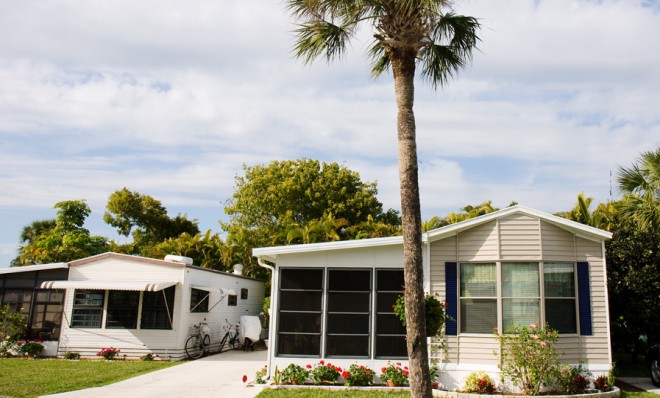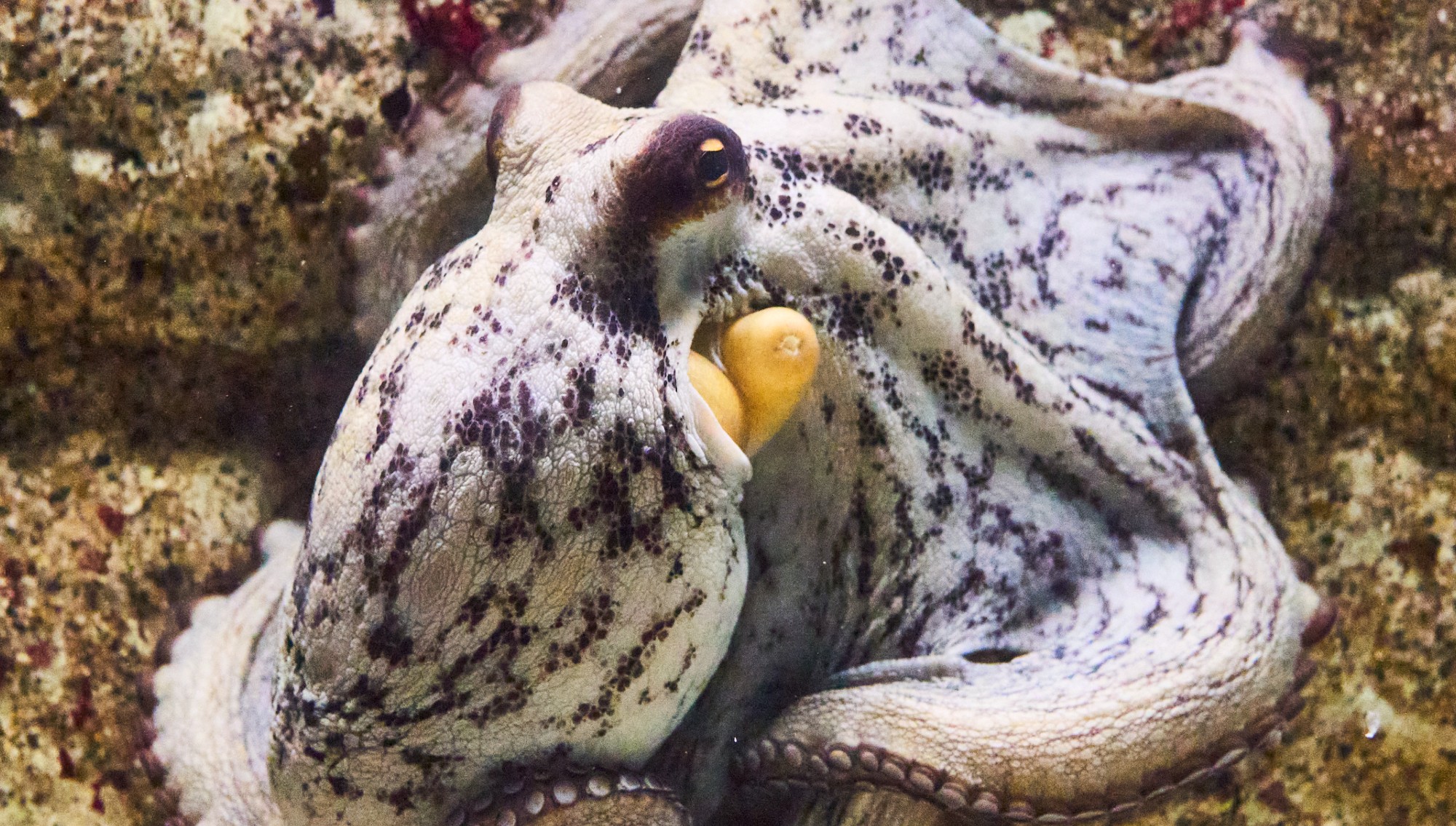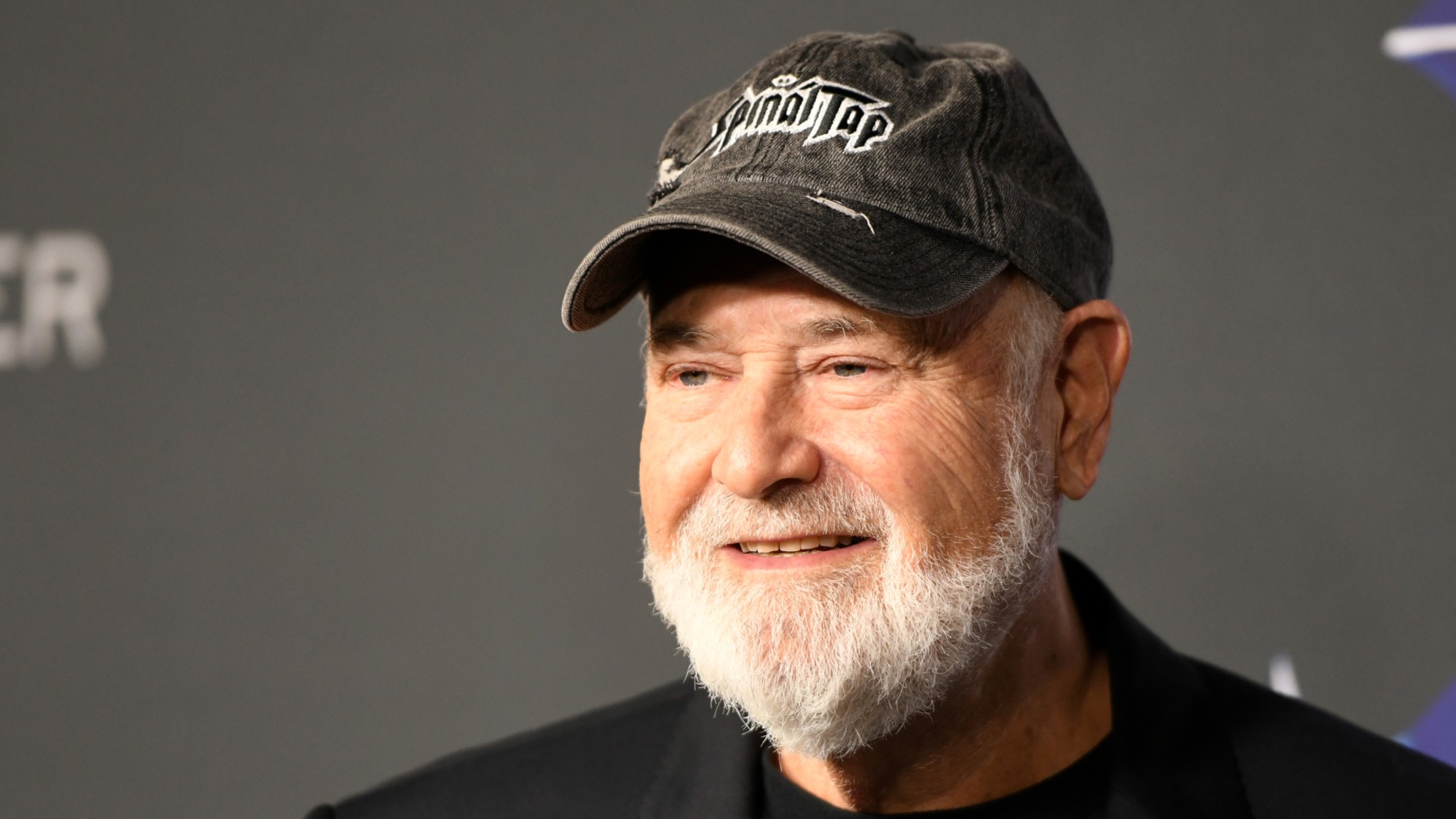Baby boomers' mobile-home paradise
Few people aspire to be old or to live in a trailer, but we need to be more open to the possibilities inherent in both

RESIDENTS CALL LIFE at Pismo Dunes Senior Park "Pismodise." California is a notoriously youthful culture, but eventually the perpetually young get very old. If they're lucky enough to live in Pismodise, a trailer park on the Central Coast, they can exit its palm-lined entrance, cross the road, amble across the capacious sand of Pismo State Beach, and dip their toes in the Pacific Ocean while contemplating eternity (or a cocktail).
To move into Pismodise you must meet four conditions: Be 55 or older, keep your dog under 20 pounds, be present when guests stay at your home, and be comfortable with what most Americans consider a very small house. "If you need more than 800 square feet I can't help you," says park manager Louise Payne, 72, with a shrug. There seems to be some leeway on the dog's weight.
No one in California aspires to be old or to live in a trailer, but we need to be more open to the possibilities inherent in both. Every day since Jan. 1, 2011, some 10,000 American baby boomers have retired, and that will continue until 2030, when people over 65 will make up 19 percent of the population (up from 13 percent today).
The Week
Escape your echo chamber. Get the facts behind the news, plus analysis from multiple perspectives.

Sign up for The Week's Free Newsletters
From our morning news briefing to a weekly Good News Newsletter, get the best of The Week delivered directly to your inbox.
From our morning news briefing to a weekly Good News Newsletter, get the best of The Week delivered directly to your inbox.
One of the biggest questions facing the nation with regard to aging boomers is: Where are they going to live? The options include independent living, nursing homes, aging-in-place, naturally occurring retirement communities (NORCs), retirement villages, memory-care units, age-restricted communities. Seniors who can live on their own cost the country relatively little — they even contribute to the economy. But those who move into nursing homes start to run up a significant tab — starting at $52,000 a year. People who are isolated and lonely end up in nursing homes sooner. Hence, finding ways to keep people living on their own, socially engaged, healthy, happy, and out of care isn't just a personal or family goal — it's a national priority. Among seniors' living options, there is one we overlook: mobile homes.
Legally and financially, manufactured homes have a second-class existence. They are not treated as real estate, but as chattel or personal property. Owners don't get the same rights or financial benefits as do other homeowners. For this reason, sociologists have described trailer parks as "quasi-homelessness" and "a kind of serfdom."
This prejudice prevents us from seeing a modest but otherwise pleasant house. Travel-trailers evolved into mobile homes, which eventually lost their wheels and became manufactured housing. By any name, they are the largest source of unsubsidized affordable housing in the country. There are 7 million manufactured homes housing 18 million people. In some counties they make up 60 percent of dwellings. Units built since 1976, when the Department of Housing and Urban Development started regulating their construction, can last as long as site-built homes when they're well built and maintained. Yet they cost far less: $41 per square foot versus $85 per square foot and up.
ERNIE LINK, 93, is sitting in front of his trailer wearing shades and trying to flirt with whoever will play along. "I get slapped a lot, but what the hell," he tells me. His house was originally a small travel trailer, but he's added a sunroom and a carport, now occupied by an electric golf cart. His daughter lives nearby, but he still wants to live alone.
A free daily email with the biggest news stories of the day – and the best features from TheWeek.com
Ernie's trailer gives him physical and financial independence. Pismo Beach's residents are 36 percent seniors, a third of whom live in mobile-home parks. In 2010, a city survey found that seniors in mobile homes spent a smaller percentage of their income on housing than renters or homeowners, even though their incomes were lower. The Department of Housing and Urban Development found that mobile-home dwellers "do substantially better," nationally, than owners and renters at keeping housing costs below 30 percent of their income.
What surprises me is the wide range of incomes in the park — more than in subsidized housing, for example, or a retirement community. Little trailers like Ernie's nestle next to much more impressive house-like units with bay windows, fancy porches, and nice cars in the drive. Louise tells me that some residents of Pismo Dunes survive on less than $900 a month, while others have monthly incomes of $15,000. For half of the residents, this is their second home. This is not a fluke: While 30 percent of seniors in mobile homes have assets under $25,000, 9 percent have more than $250,000 and some have more than $500,000.
Just before sunset, Louise and I make our way to the evening's "therapy session" at Space 329, at the junction of the two biggest streets in the park. Deenah and Ronnie Stockton have an elevated porch that allows them to see everyone coming and going. Today's conversation meanders from topic to topic: a neighbor's overweight King Charles spaniel, the ambulance that came to the park earlier in the day. Deenah tells a story about the time a 90-year-old neighbor called to ask for a cup of coffee. Deenah made the coffee and dutifully took it across the street, only to discover that the woman had fallen. Turns out she felt better asking for a cup of coffee than a hand to get up.
"Therapy" in these circles is meant as a joke, except it happens to be true. A long-running study of aging found that among the predictors of healthy aging are: not smoking, moderate drinking, having five or more friends, avoiding depression, and walking for exercise. Older people who do two out of the three last activities are more likely to spend their next six years in a sort of golden old age, without becoming dependent upon others — or, god forbid, nursing homes — for the basics of daily living. In other words, sitting on the porch, drinking and yakking, is exactly what the doctor suggests. (It's also good for all that residents can drink without driving.)
When I come back to the park just before 7 a.m. the next day, seven women are waiting for me. We set off at a brisk pace, walking all the roads of the park and waving to anyone who's looking out the window or is on the porch. Walking — on the smooth and safe streets, to the beach, and to the market in town — is a big part of the culture of Pismo Dunes. This makes park residents exceptional: Less than 25 percent of older adults say they walk regularly.
CHARLIE HENSON MOVED in after he retired in 1985. Charlie is active on the residents' committee, cajoling management to improve the park. He makes the rounds, checking on people. (He's found several people who had passed away in their homes.) And residents check on him. When his wife was ill with cancer, neighbors dropped by all the time. "Since we've been here all these years we help each other."
Margaret Julkowski walks in, tallish and luminous in Charlie's dark house. Margaret and Charlie fell in love a year ago, and they still glow. She moved to the park five years ago with her husband, who died six months later. "People were good to me even though they didn't know me," she says. One woman convinced her to come to the clubhouse, where she played cards with Charlie and his wife. When Charlie's wife passed away, he and Margaret started taking sandwiches out to where they could look at the ocean. They told me they were amazed to find out they were in love. And then word traveled fast. Residents gossiped that they'd seen Charlie kiss Margaret good night.
Gossip is the currency of a kind of community that doesn't form on Facebook. Here people watch each other, and they know they're being watched: Bad behavior is noted, people who "do the right thing" are admired. Pismo Dunes, with its little streets, is a virtuous circle where you can bank social capital. Margaret has a serious respiratory condition, and she'd ended up in the hospital for weeks at a time. Her daughter had qualms about letting Margaret move back to the park, but when she saw the parade of visitors, some carrying food, she realized Margaret was likely in the best hands here.
And another thing that unites Pismodise is death. Outside, dying is essentially a taboo topic. Here, people bring it up, in one way or another, every 15 minutes. Margaret and Charlie shared the deaths of their spouses, as well as their current lives. I've never been in such a vibrant, deathy place. "We're living to the fullest because we know mortality is close," Margaret tells me.
Mobile-home parks can, for some seniors, do a better job of meeting needs than more-traditional arrangements in apartment buildings or in the suburbs. The design of the community allows seniors to own and modify their homes, have dogs, and putter around with hobbies like gardening in a way they couldn't in an apartment building. Meanwhile, because parks have boundaries and streets, they function a bit like a gated community, where residents feel safe and have an easier time making friends than in either an apartment or a suburb. Mobile-home parks give residents a lot of control over their desire to be alone or to be social.
BUT BUYER BEWARE, all is not right in the mobile-home park: Residents have to contend with a parallel world of second-class legal rights and financing that needs to be changed before manufactured homes are a really good investment. The legal problems start with the parks themselves. Because most residents own their homes but not the land under them, they have the rights of neither renters nor homeowners. Residents don't really have the ability to move if landlords raise rents because moving a full-size manufactured home can cost as much as $25,000.
The financial system, meanwhile, treats manufactured homes more like cars than houses — which means they depreciate like cars rather than gaining value the way houses do. Even though manufactured homes last as long as conventional site-built houses, they start losing value as soon as the buyer moves in.
And that's too bad, because in many cases, new manufactured houses can solve another problem: They offer greener housing than other options. A 2012 report found that mobile homes use, on average, far less energy and water than conventional homes or condos. While models built before 1976, when federal regulations kicked in, sometimes have exorbitant utility bills, newer models made to Energy Star efficiency standards can reduce the combined costs of electricity, gas, and water to well below $1,000 a year, even in the hottest and coldest parts of the country.
When I went back to visit with Charlie and Margaret, she was thin and weak, preparing to go back to the hospital. Margaret told me that they were blessed to have found each other and, "We always say how blessed we are to have reasonable rent of $400 to $450 a month this close to the ocean," she added. "I don't know where we could live for that much unless it was subsidized senior housing. And as someone who worked for the welfare department, I never wanted to live in one of those places."
By Lisa Margonelli. ©2013 by Pacific Standard. Reprinted with permission.
-
 The Week contest: Octopus album
The Week contest: Octopus albumPuzzles and Quizzes
-
 Hegseth rejects release of full boat strike footage
Hegseth rejects release of full boat strike footageSpeed Read There are calls to release video of the military killing two survivors of a Sept. 2 missile strike on an alleged drug trafficking boat
-
 ‘It’s another clarifying moment in our age of moral collapse’
‘It’s another clarifying moment in our age of moral collapse’Instant Opinion Opinion, comment and editorials of the day